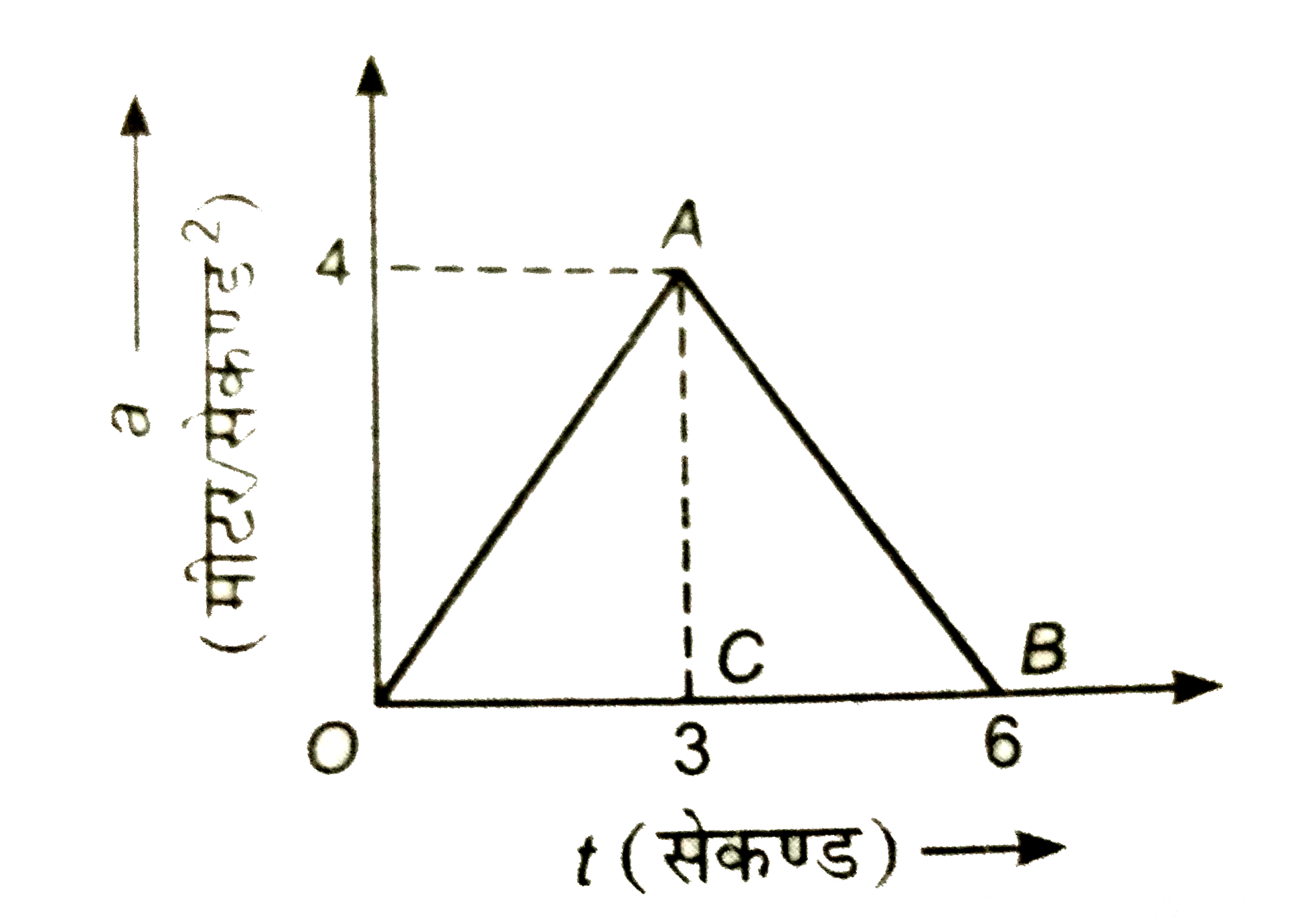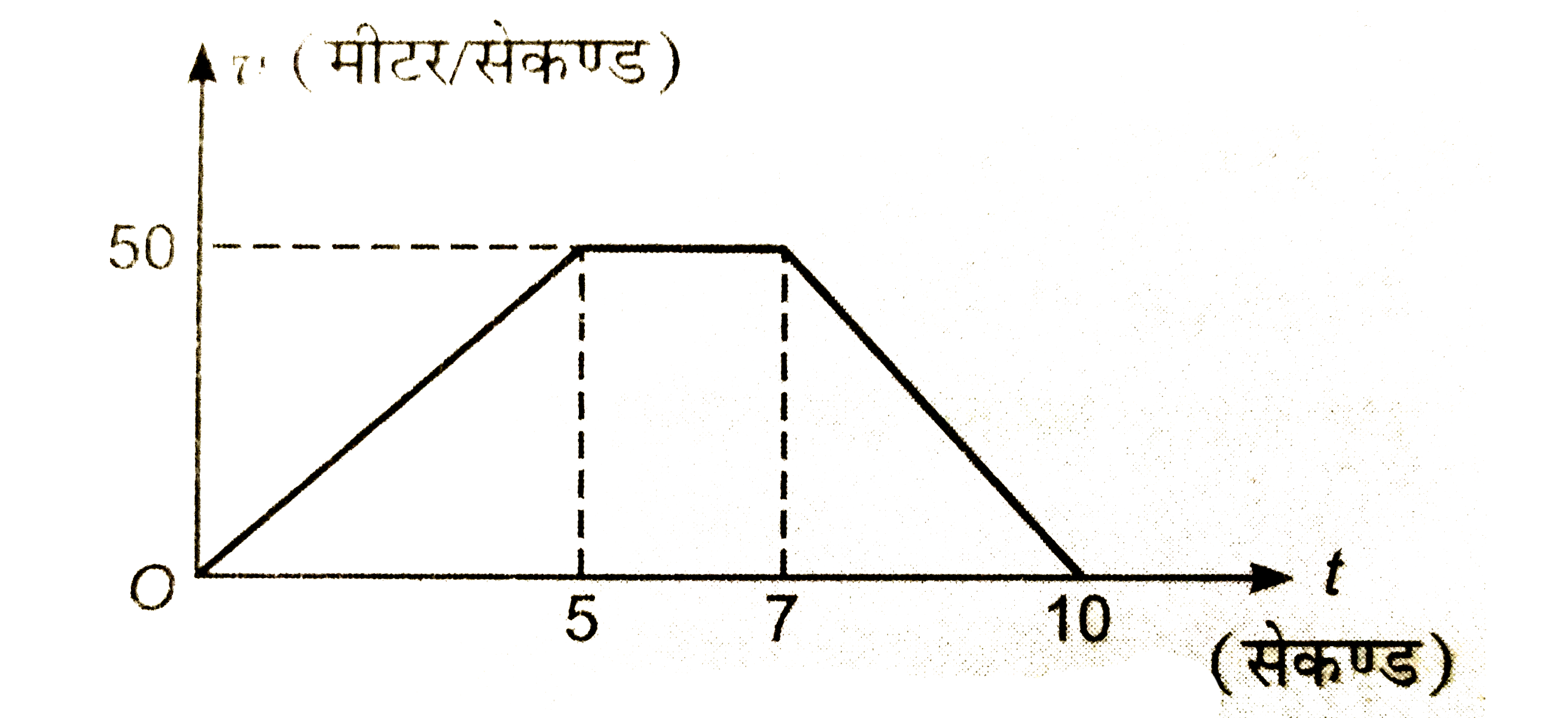A particle moves with uniform acceleration and the distance travelled in t - th second is st=3+2t . Find the initial velocity of the particle . Solution in Bengali
St=3+2t=4+(2t−1)=4+12×2(2t−1)
comparing with the expression for the distance travelled in t-th second ,st=u+12a(2t−1)
initial velocity of the particle u=4 unit
Topper's Solved these Questions
- BOOK - CHHAYA PUBLICATIONCHAPTER - WBCHSE QUESTION PAPER -2019EXERCISE - SECTION - II ( GROUP -C)21videos
WBCHSE QUESTION PAPER -2019
- BOOK - CHHAYA PUBLICATIONCHAPTER - WBCHSE QUESTION PAPER -2019EXERCISE - SECTION - II ( GROUP -D)10videos
WBCHSE QUESTION PAPER -2019
- BOOK - CHHAYA PUBLICATIONCHAPTER - WBCHSE QUESTION PAPER -2019EXERCISE - SECTION - II ( GROUP -A)6videos
WBCHSE QUESTION PAPER -2019
- BOOK - CHHAYA PUBLICATIONCHAPTER - VISCOSITY AND SURFACE TENSIONEXERCISE - EXERCISE (CBSE SCANNER)9videos
VISCOSITY AND SURFACE TENSION
- BOOK - CHHAYA PUBLICATIONCHAPTER - WORK AND ENERGYEXERCISE - CBSE SCANNER27videos
WORK AND ENERGY
Similar Questions
What are the advantages of friction ?
04:06View SolutionEquations of trajectory of a projectile are x=4 t, y=3t−5t2 , where x and y are in metre and t is in second . Find (i) maximum height attained by the projectille , (ii) horizontal range of the projectile .
03:42View SolutionIf a= 10.5 and b= 2.01 , considering significant digits write the value of a +b .
05:02View SolutionState and prove Bernoulli's theorem.
04:42View SolutionProve that the total mechanical energy remains constant for a ball mass m dropped from a tower of height h.
04:18View SolutionA particle is moving with uniform acceleration. Its displacement at any instant t is given by s=10t+49t2 .find (i) initial velocity (ii) velocity at t=3second and(iii) the uniform acceleration.
12:47View SolutionA particle is moving in a straight line with initial velocity u and uniform acceleration f . If the sum of the distances travelled in t^(th) and (t + 1)^(th) seconds is 100 cm , then its velocity after t seconds, in cm//s , is.
03:28View Solutionसरल रेखा में गतिमान एक कण का त्वरण (a) समय (t) ग्राफ संलग्न चित्र में प्रदर्शित है। कण का प्रारम्भिक वेग 2 मीटर/सेकण्ड है। ज्ञात कीजिए (i) t=3 सेकण्ड तथा t=6 सेकण्ड पर कण का वेग (ii) t=0 से t=6 सेकण्ड के बीच कण का औसत त्वरण।
 03:29View Solution
03:29View Solutionएक कण विरामावस्था से एकसमान तवरण से गति प्रारम्भ करता है। t सेकण्ड पश्चात कण का वेग 100 मीटर/सेकण्ड तथा इसके 1 सेकण्ड बाद कण का वेग 150 मीटर/सेकण्ड हो जाता है। ज्ञात कीजिए।
(i) कण का त्वरण (ii) (t+1) वें सेकण्ड में कण द्वारा तय दूरी।05:53View Solutionसिद्ध कीजिए कि प्रारम्भिक वेग u से एकमान त्वरण a के अन्तर्गत गति करते हुए कण द्वारा t वे सेकण्ड में चली दूरी होती है।
xt=u+12a(2t−1)View Solutionएक कण का वेग समय ग्राफ चित्र में प्रदर्शित है। ज्ञात कीजिए।

(i) t=0 से t=5 सेकण्ड के समयान्तराल में कण का त्वरण।
(ii) t=5 से t=7 सेकण्ड के समयान्तराल में कण का त्वरण।
(iii) t=7 से t=10 सेकण्ड के समयान्तराल में कण का त्वरण।
(iv) t=0 से t=7 सेकण्ड के समयान्तराल में कण द्वारा तय दूरी।
(v) t=0 से t=10 सेकण्ड के समयान्तराल में कण द्वारा तय दूरी।03:57View SolutionA particle with initial velocity u is moving with uniform acceleration (a). The distance moved by the particle in the t^(th) second is given by S=u+(1)/(2)a(2t-1) The dimensions of S must be
04:36View SolutionA particle moving along a straight line has the relation s=t3+2t+3, connecting the distance s describe by the particle in time t. Find the velocity and acceleration of the particle at t=4 sec.
01:51View Solutionu प्रारम्भिक वेग तथा a त्वरण से चलने वाले कण के द्वारा xवें सेकंड में तय की गई दूरी होगी-
01:36View Solutionयदि एक कण का वेग t सेकंड में s मीटर दूरी तय की जाती है तथा s=5t3+2t2 तब 3 सेकेण्ड के अंत में कण का त्वरण क्या होगा ?
View Solution

